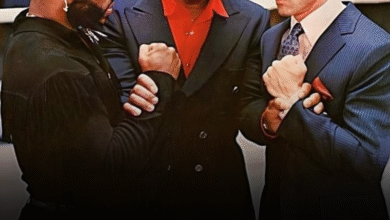Shirley MacLaine Reveals Why Working with Audrey Hepburn Was ‘Pure Joy’—And What She Taught Her
OPINION: This article may contain commentary which reflects the author's opinion.
Shirley MacLaine has often spoken fondly of her relationship with Audrey Hepburn, emphasizing their special professional and personal bond. Their collaboration in the 1961 film The Children’s Hour, which tackled the controversial theme of homosexuality, marked a pivotal moment in both actresses’ careers. MacLaine’s recollections of their time together highlight not only the depth of their working relationship but also the warmth and empathy that defined their personal connection.
A Professional Partnership in The Children’s Hour
The iconic pairing of MacLaine and Hepburn in The Children’s Hour, directed by William Wyler, was groundbreaking for its time. Based on Lillian Hellman’s play, the film explores the accusations of a lesbian relationship between two schoolteachers, played by MacLaine and Hepburn. While the film was ahead of its time in addressing such a sensitive topic, MacLaine recalled that the filming process was a positive experience, stating that she “adored” working with Hepburn. Their mutual respect was apparent, and MacLaine noted that their shared background in ballet—although Hepburn was not as professionally trained—helped them connect both personally and professionally.
MacLaine spoke about this connection in a 2024 People interview, noting how their understanding of dance and its discipline made it easier to embrace the film’s risky theme. Hepburn’s earlier ballet background, despite her eventual departure from the dance world, provided a foundation for their on-screen chemistry. “We understood each other as dancers,” MacLaine explained, adding that their mutual artistry in movement translated to their performances.
However, as revealed in the 1996 documentary The Celluloid Closet, MacLaine mentioned that she and Hepburn never directly discussed the lesbian themes in their characters’ relationship. Director William Wyler, she said, cut scenes that hinted at their characters’ romantic feelings due to concerns over critical backlash. The film’s handling of such sensitive material—combined with the professional boundaries in place—reveals the era’s challenges in addressing LGBTQ+ topics in mainstream cinema.
Personal Friendship and Mutual Admiration
Beyond their professional collaboration, MacLaine and Hepburn shared a deep and enduring personal friendship. MacLaine frequently expressed admiration for Hepburn’s empathetic nature. In a touching quote, MacLaine described Hepburn as someone who “when she saw someone else suffering tried to take their pain on herself.” MacLaine further explained that Hepburn was “a healer” and that she possessed an innate ability to love others unconditionally. This deep empathy, MacLaine reflected, made Hepburn the type of friend who could always be counted on, even when they weren’t in constant contact.
Despite the demands of their busy careers, MacLaine and Hepburn were able to maintain their close friendship. “We always picked up right where we left off,” MacLaine recalled, reinforcing the lasting nature of their bond. These personal memories, shared with the public over the years, reflect how Hepburn’s warmth and genuine care impacted those around her, including MacLaine.
Additionally, MacLaine shared playful anecdotes about their interactions. One of the more humorous moments involved her teaching Hepburn “a little about cussing,” while Hepburn took on the role of the more fashion-savvy of the two, offering tips and guidance on dressing. These lighthearted exchanges paint a picture of two women who not only respected each other’s professional talents but also enjoyed a personal dynamic filled with humor and mutual support.
Regrets and Reflections
MacLaine’s reflections on Hepburn are not just filled with fond memories but also moments of personal regret. One such regret, as revealed in her 2024 book The Wall of Life, was turning down the role of Holly Golightly in Breakfast at Tiffany’s, a role Hepburn famously made iconic. MacLaine admitted that she didn’t want to worry about weight for fittings and felt the script wasn’t strong enough. In hindsight, however, she expressed a degree of regret about not pursuing such a career-defining role, which Hepburn made legendary.
Conclusion
Shirley MacLaine’s reflections on Audrey Hepburn highlight a relationship built on mutual respect, admiration, and shared artistry. Their time together in The Children’s Hour left a lasting impression on both actresses, not only professionally but personally. Hepburn’s empathetic nature and MacLaine’s unwavering respect for her made their friendship a meaningful one, marked by moments of humor, deep connection, and unwavering support. Despite the professional boundaries they maintained during filming, the warmth of their friendship has remained a cherished part of MacLaine’s memories, further cementing Hepburn’s legacy as not only an iconic actress but also a beloved friend.



